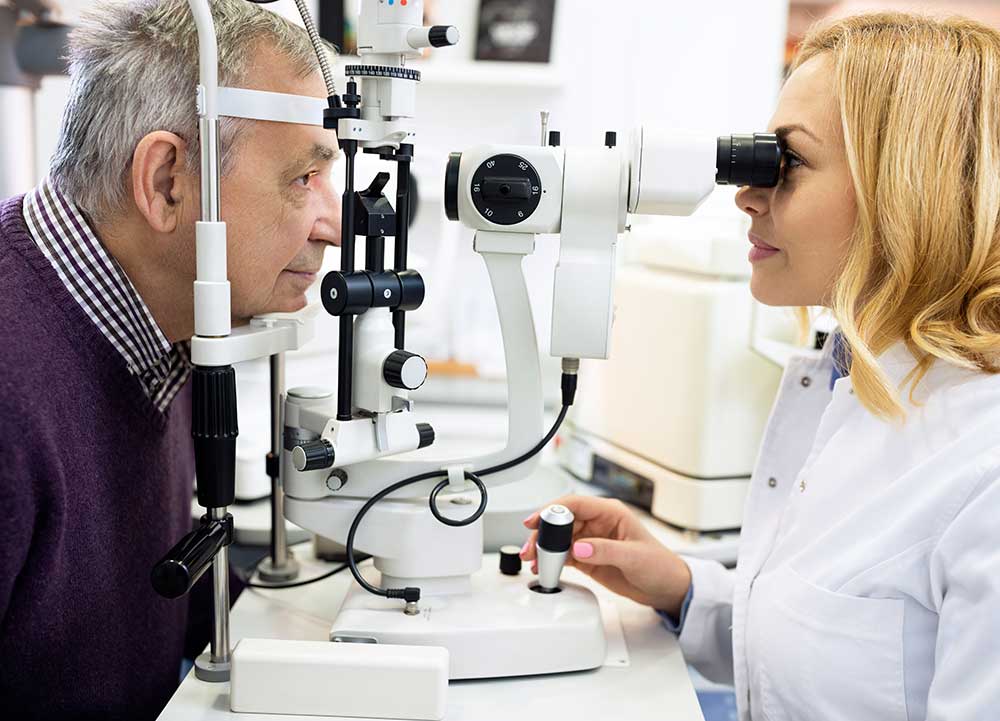Disclaimer: The information on our website is provided for general information purposes only. We make no representations or warranties of any kind, express or implied, about the completeness, accuracy, reliability, suitability or availability with respect to the website or the information contained on our website for any purpose. Any reliance on such information is therefore strictly at your own risk and we are not liable for any damages or losses arising out of or resulting from your reliance on any information contained on our website.
An optometrist examines, diagnoses, and treats the eyes. They treat patients of all ages, but some may choose to specialize in children or other areas of specialty, like research in optometry colleges. An optometrist treats any problem that a patient may suffer from in regards to the visual system. They also write prescriptions for contact lenses or eyeglasses and perform minor surgeries to treat or correct eye issues.
Watch a video to learn what an optometrist does:
How to Become an Optometrist

An optometrist requires a Doctor of Optometry Degree (O.D.) and a state license to practice. First, one must earn a bachelors degree; this can take anywhere from 3-4 years. Students usually earn a pre-medical or biology degree and take courses in anatomy, chemistry, physics, biology, and statistics while attending their undergraduate programs. After earning your bachelors, a student hoping for admission into the O.D. must also take the Optometry Admissions Test (OAT). This evaluates the applicant in biology, general chemistry, organic chemistry, reading comprehension, physics, and quantitative reasoning. It is divided into four parts, is multiple choice, and must be completed in 280 minutes.
Once accepted into an O.D. program, it takes an additional four years after obtaining an undergraduate degree. All programs require both supervised clinical work and classroom instruction. Once you have completed the program and achieved the Doctor of Optometry Degree, you do have the option to continue an additional residency to specialize in an area of interest, like ocular disease, family practice, or other areas of specialty. However, this is not necessary to work as an optometrist.
In addition to work, all optometrists must sit for their boards to become licensed through the National Board of Examiners in Optometry. Pending on where you reside, some states also require additional clinical exams or an exam on laws relating to optometry in the state they live in. We encourage you to explore your state’s board of optometry for more information on licensing requirements.
Job Description of an Optometrist
An optometrist examines a patient’s eyes and tests for low vision problems and any eye disease that may be present. They prescribe contact lenses or eyeglasses when necessary. They may also perform low-vision rehabilitation or vision therapy and may even perform minor eye surgery when necessary. An optometrist examines a patient’s eye before and after surgery (pre-and post-op) and provides care to the person. He or she will also refer a patient to other health care professionals if an underlying disease (such as diabetes or high blood pressure) is found.
Optometrists educate people about eye health care and consult with other medical professionals as necessary. Some optometrists provide specialized care, primarily if they work at a group practice with other optometrists or physicians.
Optometrists work full time and primarily in an office setting. Sometimes they may be on call for emergencies; therefore, may work weekends or nights. They alternate between sitting and standing but are often in rooms with low light or dim lighting due to their work nature. They have assistants that help them, and they do use a computer for medical charting and communication. Most work in private practices or for themselves.
Optometrist Career Video Transcript
While their iconic testing device (known as a phoropter) and the rows of ever-shrinking letters on a vision test may look like something out of Victorian times, in reality, optometrists use state-of-the-art science and technology to examine patients’ vision. In addition to diagnosing sight problems, optometrists prescribe eyeglasses and contact lenses to correct vision, and they may perform minor surgeries. They also diagnose and treat eye diseases or injuries and manage other eye disorders.
Optometrists rely on interpersonal skills to help patients feel at ease and respond effectively to vision testing. At vision check-ups, they counsel patients on how broader health care affects eyesight and promote good eye health practices. The accuracy of their prescription relies both on their technical skills and a clear understanding between doctor and patient. Most optometrists work in offices of optometry. Others work in doctors’ offices, optical goods stores, or are self-employed.
Optometrists work full-time, and may work weekends or evenings to accommodate their patients’ needs. Optometrists must complete a 4-year Doctor of Optometry program and be licensed to practice in a particular state. They must also pass the National Board of Examiners in Optometry exam. Doctoral program applicants must have completed at least 3 years of college that include courses in biology, chemistry, physics, English and math.
Article Citations
Bureau of Labor Statistics, U.S. Department of Labor, Occupational Outlook Handbook, Optometrist.
National Center for O*NET Development. 29-2081.00. O*NET OnLine.
The career video is in the public domain from the U. S. Department of Labor, Employment and Training Administration.


